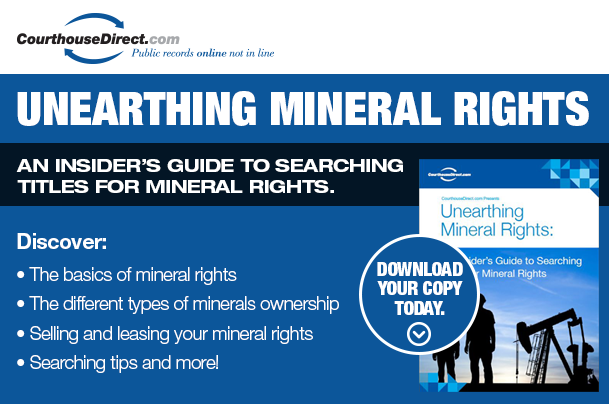 Oil and gas royalties are some of the most important parts of the leases between production companies and landowners. Royalties refer to landowners’ shares of the gross production of oil and gas, typically free from production costs. Oil and gas royalties are the reason most landowners agree to allow oil and gas drilling and production on a property.
Oil and gas royalties are some of the most important parts of the leases between production companies and landowners. Royalties refer to landowners’ shares of the gross production of oil and gas, typically free from production costs. Oil and gas royalties are the reason most landowners agree to allow oil and gas drilling and production on a property.
Understanding how companies calculate oil and gas royalties can make it so a company doesn’t take advantage of you as a landowner, and help you understand how to come up with a fair royalty clause as an oil or gas company.
What Is an Oil and Gas Royalty?
Whenever a company begins oil and gas production, the law entitles the owner of the land to a portion of the total production. A royalty is the portion of production the landowner receives. A royalty clause in the oil or gas title process will typically give a percentage of the lease that the company pays to the owner of the mineral rights, minus production costs. Royalties are free from costs and charges, other than taxes.
Oil and gas companies base the price of oil and gas royalties on a percentage of the gross production from the land. It is a landowner’s responsibility to try to negotiate as high a royalty as possible when agreeing to enter a contract with an oil or gas company. There might be the opportunity for the property owner to take his or her royalties in the form of oil instead of in cash. However, unless the lessor knows a lot about the oil market, this might not be the wisest choice.
Most property owners will instead elect to take the royalties as cash at the current market price of the oil. Gas royalties generally come as cash, because market gas prices are difficult to value. It is possible for a property owner to stipulate separate payments for oil and gas royalties. Landowners can also negotiate royalty interest charges, due dates and late payment penalties. The lessor is the party in control of royalty terms and conditions in most cases.
Five Numbers You Need to Calculate Oil and Gas Royalties
Most landowners don’t exactly know how to accurately calculate royalty payments, especially in situations such as sharing oil and gas acreage with a neighboring property. While there are online calculators available to help with royalty calculation, it’s best to at least understand the basics of the calculation to ensure fairness. There are five units a landowner will need to know to perform the basic oil and gas royalty formula:
- Number of acres the landowner owns within the production unit
- Total size (in acres) of oil and gas production unit
- Total amount of production
- Production costs and taxes the company will take
- Royalty percentage the lease indicates
The oil and gas company initiating the lease should be able to provide the numbers for items one through four. To calculate the royalty percentage, a landowner will need to review the terms of the lease. The lease’s terms, check stubs for royalty payments, and the Department of Natural Resources public records should have the information you need to make your calculation.
Basic Oil and Gas Royalty Equation
There are several ways to calculate oil and gas royalty payments. There is a basic equation, as well as other considerations in more difficult contracts and items. The basic equation for calculating oil and gas royalties uses the above-mentioned five items. Landowners can use the basic equation to come up with the gross royalty amount:
Here’s an example of the equation in action:
You own 50 acres. The total size of the production unit is 1,000 acres. You signed a lease with the company in which you are to receive 20% of the gross oil and gas production within one year. The total amount of production was 40 barrels of oil, which sold for $100 per barrel, and 1,000,000 MCF of gas, which sold at $5 per MCF. The estimated total gross production was $5,004,000 in 90 days. To calculate your oil and gas royalties, you would first divide 50 by 1,000, and then multiply this number by .20, then by $5,004,000 for a gross royalty of $50,040.
Once you calculate your gross royalty amount, compare it to the number you see on your royalty check stubs. If the amount you’re getting is less, the oil and gas company could be reducing your royalties for some post-production cost and/or taxes. The amount the company reduces your gross royalty depends on what you agreed upon in your lease. Therefore, it’s important for a landowner to carefully review the leasing terms before signing his or her name on the dotted line.
Special Considerations When Calculating Oil and Gas Royalties
In most royalty clauses, the oil and gas production company will take care of the costs of exploration, production, and marketing (unless the clause states otherwise). If a clause states that the royalty is established “at the well,” this means the company won’t reduce the landowner’s royalty payment by production costs. If a royalty clause states that the royalty percentage must come from the highest price for fields within a certain radius, this is the prevailing price of the oil or gas. If the clause uses the market price at the well in the field as the prevailing price, this will be the amount the landowner uses to calculate royalties.
Some calculation methods connect oil and gas royalties to actual revenue the company receives from the sale of the oil or gas. Gas royalties most commonly use this method. A third royalty calculation type exists in which the landowner chooses to take the royalty “in kind,” or in the form of oil or gas instead of cash. This choice may give the landowner higher royalties based on the market, but again, the landowner would need to understand oil and gas sales. Landowners must also subtract the costs of royalty taxes, as well as the costs of moving the oil or gas from the well to storage tanks.
The most important thing to note when calculating oil and gas royalties is that each leasing agreement is unique. The landowner must carefully read the terms of the royalty clause before signing over the right to oil and gas production and try to negotiate better terms with the oil and gas company as desired. For assistance calculating your oil and lease royalty payment, talk to an attorney or contract negotiator. You will need several documents and important pieces of information before you can accurately gauge how much a gas and oil company should pay you in royalties.
Tools to Help You Calculate Oil and Gas Royalties
Oil and gas companies will use land surveys to calculate how much land you own, where your property boundaries exist, and your percentage of royalties based on land ownership. Performing an online public records search about your land can give you this information, and help you more accurately calculate a fair royalty agreement. Land records can also tell an oil and gas company if a property lease already exists, how long the lease lasts, and previous royalty amounts for the piece of land.
Landowners need to stay informed about their rights as mineral owners. Landmen must stay up to date on the most current information about oil and gas leasing agreements. Both parties can use online public records to gather more information about a property, calculate oil and gas royalties, and come up with fair royalty clauses in leasing agreements.























